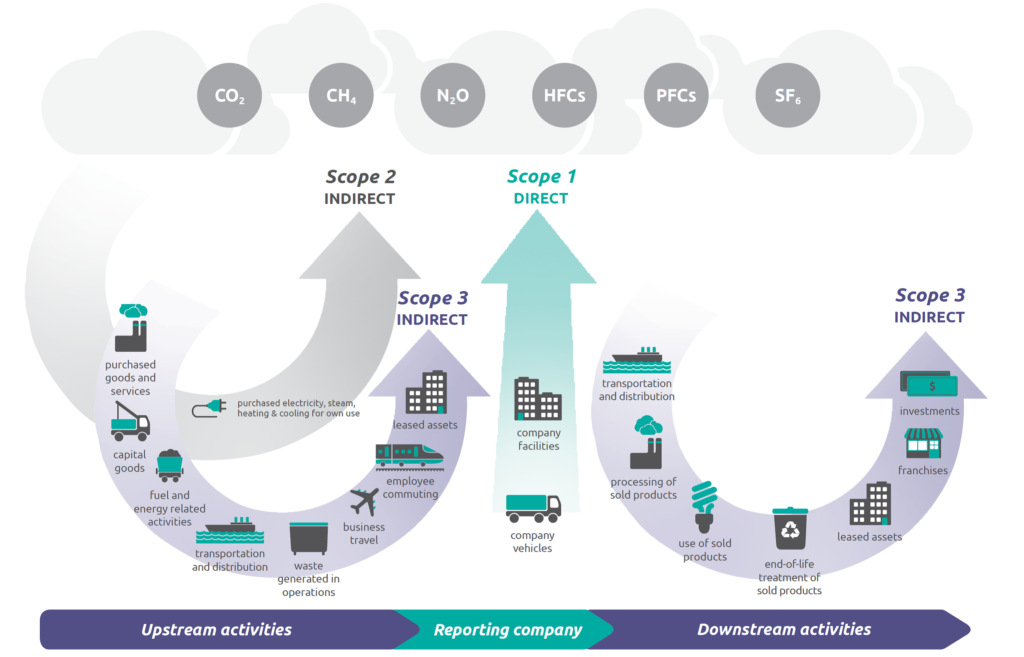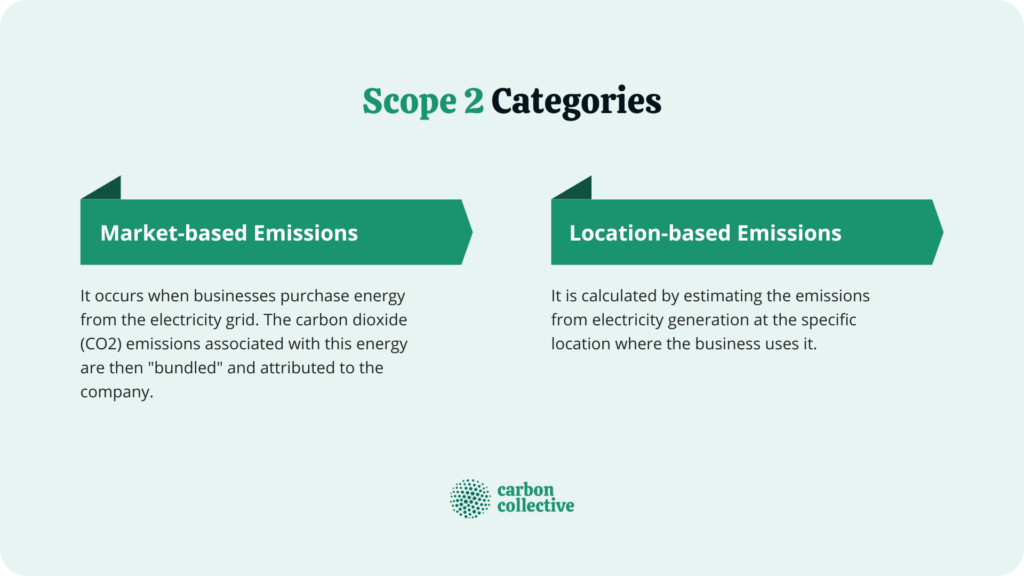After receiving and reviewing over 12,000 public comments by late fall 2022, the Securities and Exchange Commission (SEC) is finally set to finalize its much-anticipated rules on climate-focused disclosures in April 2023. In addition, the European Union recently finalized its own Corporate Sustainability Reporting Directive, which has even more stringent reporting requirements, including for companies not headquartered in the EU but that have substantial branches or subsidiaries there. Both sets of regulations create massive implications for how corporations will have to track and report on emissions moving forward.
Once the rules are finalized and guidance is issued on what disclosures are required, to what level of detail and what reporting authority will be overseeing the process, companies will be on the hot seat to get a firm grip on – and then offset or reduce – their carbon footprints, through procurement of clean energy or renewable energy certificates (RECs).

Scope 2 emissions often represent “lower-hanging fruit” in the reduction of carbon emissions. This is due in large part to the broad range of initiatives and options companies can pursue and the larger degree to which companies can influence these emissions, compared to the Scope 3 emissions resulting from their suppliers upstream and downstream. In this post, we’ll shed light on how to reduce Scope 2 emissions by type and goal.
What are Scope 2 Emissions?
According to the Greenhouse Gas (GHG) Protocol guidance, Scope 2 emissions can be defined in the following way:
“Scope 2 indirect emissions include carbon from purchased electricity, heat, steam, and cooling that comes from an electrical utility or municipal source.”
Scope 2 emissions are considered an upstream energy activity. Many businesses accrue Scope 2 emissions through:
- Energy consumption for powering business sites and offices
- Generation that stems from leased and nonrenewable sites, or
- Any additional energy output from equipment that isn’t accounted for in other calculations
The GHG Protocol defines indirect emissions as those that “are a consequence of the reporting company, but occur at sources controlled or owned by another company.”
Scope 2 Emissions Categories
Scope 2 emissions are categorized according to two different carbon accounting methods. Each one has unique implications for sourcing, measurement, calculation, and reduction protocols.
 Market-based Scope 2 emissions – The market-based measurement for Scope 2 emissions is dependent on the energy certificates (Renewable Energy Certificates) that organizations choose to buy to offset their estimated energy consumption. These are accounted for ahead of time during the purchase agreement.
Market-based Scope 2 emissions – The market-based measurement for Scope 2 emissions is dependent on the energy certificates (Renewable Energy Certificates) that organizations choose to buy to offset their estimated energy consumption. These are accounted for ahead of time during the purchase agreement. - Location-based Scope 2 emissions – In contrast, a location-based method focuses on energy output of the local grid where the emissions occur. This method hinges on where the company actually uses the energy required to operate.
Common Sources of Scope 2 Emissions
As noted previously, indirect emissions are related to upstream activities in the course of typical business operations. These activities include or relate to purchased electricity, heating, cooling or steam – meaning those procured from an electricity generator or utility – for operational use.
A basic example of a Scope 2 emissions source is a company that buys natural gas from a local utility provider as a means for powering or providing heating at a production site. The company doesn’t generate this energy on its own, but the organization is responsible for its use.
In a world where emissions concerns are high, the question then becomes—how do businesses, enterprises, and traditional organizations use these energy sources? Is it possible to achieve alternatives? Becoming more proactive is vital in the race to keep global temperatures below a scientific tipping point.
Important Steps for Scope 2 Reduction
In order to reduce Scope 2 emissions, you must first identify the current sources of Scope 2 in your organization and corporate output. It’s essential to know how to calculate Scope 2 totals by having reliable calculations tools in place, like carbon accounting software.
Common recommendations for reducing the total emissions from Scope 2 sources also include tasks such as:\
- Switching to low-carbon energy suppliers and sources
- Purchasing or securing onsite renewables
- Reduce overall demand, including by creating a workable plan for energy efficiencies across the entire property portfolio, or by evaluating upgrades to building heating and cooling systems
- Offsetting emissions practices for all sources
For a comprehensive look at measuring, reducing, and regulating Scope 2 emissions sources, the Greenhouse Gas Protocol Scope 2 Guidance is the leading source across all industries, with revisions to the Guidance due later in 2023. The most recent guidance amends the GHG Protocol Corporate Standard for emissions reduction across the board in order to provide companies with the most up-to-date advice.
The Benefit and Value of Reducing Scope 2 Emissions Now
Without a doubt, there is an inflection point that organizations must get ahead of now in order to reduce the global temperature increase in the future.
Many energy experts agree that Scope 2 efforts “present a significant emissions reduction opportunity.” That’s because these emissions are not only measurable, but they can account for up to a large share of emissions for an average global company for which its footprint is primarily focused in leased office space and other facilities.
Reducing these totals, therefore, brings down each organization’s carbon footprint substantially—and in a way that makes a tangible difference.
Moreover, businesses often have a greater amount of direct control over the types of energy that they purchase from other sources and utilities. There are options available in upstream activities that aren’t necessarily available for Scope 1 emissions.
Reducing Scope 2 Emissions in Business Applications
As we head into the future, emissions reports from Scope 1, 2, and 3 sources will be used more frequently to hold commercial businesses accountable. In a world where everyone must do their part to protect the future of the planet, accurate measurement matters. Failing to act can put companies at risk of hefty fines for noncompliance in a growing number of markets.For example, commercial real estate developers and managers must be able to accurately measure their carbon footprint at various operating locations to meet compliance needs for local regulations like New York’s Local Law 97, Boston’s BERDO or Maryland’s Climate Solutions Act. Publicly-traded companies will need to follow suit to meet requirements under the SEC’s climate-focused disclosure rules, and both publicly-traded and privately-owned companies will be subject to requirements under the EU’s Corporate Sustainability Reporting Directive.
Carbon accounting technology like Cleartrace makes the burden of carbon tracking easier to bear. It also means that corporations can avoid hefty fines for noncompliance and that stakeholders can benefit from trustworthy data sources to make the best future-forward decisions.
Proactively Reduce Your Scope 2 Emissions
Scope 2 emissions totals from individual organizations continue to contribute to the global carbon output around the world. As these emissions become the focus of further monitoring and greater regulation, corporations must take a proactive stance to reduce them.
Want even more insight into the upcoming Scope 2 guidance and regulations? Listen to this Energy Minute segment of Cleartrace’s podcast, The Decarbonization Race, to learn more about market-based vs location-based carbon accounting strategies.


 Market-based Scope 2 emissions
Market-based Scope 2 emissions